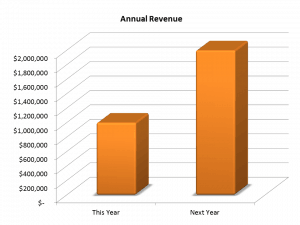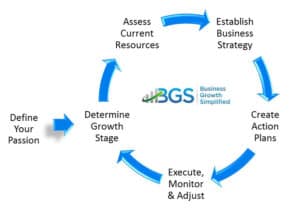 This weekend I ran into a prospect from a technology company that I had proposed a strategic planning retreat for their senior leadership team 3 or 4 month ago. Let’s call them company 1.
This weekend I ran into a prospect from a technology company that I had proposed a strategic planning retreat for their senior leadership team 3 or 4 month ago. Let’s call them company 1.
We spoke about how they are trying to decide whether to move forward or not on my proposal. It seems they are debating when to begin or whether they can afford to do it. I mentioned the public strategic planning retreat we have scheduled for the end of October. He asked me to send some so info.
While I was composing the email to send to him with the information I realized that I began working with another technology company just a few weeks after making the proposal to company 1. Let’s call this company 2.
Company 2 just completed a first round of their strategic planning. They have a clear action plan for the last 3 months of the year and a clear picture of what they need to do to double their sales next year. Everyone is energized and committed to completing this year’s Q4 action plan in preparation for next year’s double of sales growth!
Company 1, I can confidently say will be in the same place at the end of this year and still not know exactly what they need to do to increase revenue by 10% much less double revenue next year!
Strategic Planning is a Process
 So, what’s the difference? While the way I wrote this post it may appear that it is company 2’s plan that is the difference, but it’s not ! In fact it is not the document itself but the fact that they went through the strategic planning process:
So, what’s the difference? While the way I wrote this post it may appear that it is company 2’s plan that is the difference, but it’s not ! In fact it is not the document itself but the fact that they went through the strategic planning process:
- Set a revenue goal
- Evaluated the resources they needed to meet the goal
- Identified the gaps in their current revenue engine
- And set objectives based on what is specifically needed to achieve the goal.
While there are 1,000 activities to attend to in getting there, they have identified the 3 – 5 that are most critical and made them top priority for the company. Now, everyone is focused on what needs to happen to hit the revenue goal. This process is what I mean when I refer to “tuning your revenue engine.”

It’s not difficult to learn or even to do. You just have to take the time to answer a few simple, yet critical questions, about your business’ revenue cycle. Once you’ve done that you can plan and manage the growth of your business to whatever level you wish.
Do you think strategic planning is just too much for your business? Then I suggest at least determining where your current revenue chokepoints exist. You can do this quickly by conducting a Revenue Engine Performance Checkup.
If you don’t the likelihood is very high that you’ll be stuck in the same place at this time next year. You’ll be asking yourself the same question “how do I get my business unstuck next year.”





Leave A Comment